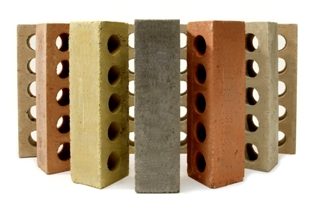Could you green the world brick by brick?

One California-based company is going to try. And they're going to make those "green" bricks in Wisconsin, not ship them in from China.
The new-fangled brick has been pioneered by CalStar Products. A basic ingredient of the CalStar brick is coal ash, residue from burning coal. There are huge mounds, huge ponds, huge heaps of it all over coal-burning states in the U.S.
I recently spoke with CalStar's CEO, Michael Kane, a veteran of decades in the building supply industry. As I've heard from innovators in wallboard and windows and other materials: the new, green product has to look and act and handle just like the energy-sucker it replaces.

Mr. Kane tells me they've got the process locked down now at CalStar and much of the research work involved chemistry. What it doesn't involve is a huge waste of energy. Kane explained current bricks are made with a three thousand year old technology that means firing each brick for a day or longer at around 2000 degrees Fahrenheit. That's how the energy gets sucked up. CalStar's building materials are produced with a chemical process that takes place at temperatures below that of boiling water (that would be about 212 degrees at sea level). Kane is very proud of the fact that his will be the first standard-strength, meet-all-requirements, building brick in America to NOT go through a super-hot kiln. His energy costs will be a fraction of what competitors must pay.
BUILDING THE BUSINESS
CalStar has numerous distributors lined up. In January they expect to begin moving bricks out of their production plant in Caledonia, near Racine, Wisconsin. The early rounds of financing came from Foundation Capital and other VCs. Kane's hopeful the new push from Washington for less greenhouse gas emission will help his firm. It could lead to much higher production costs for traditional brick makers and their super-hot drying kilns.